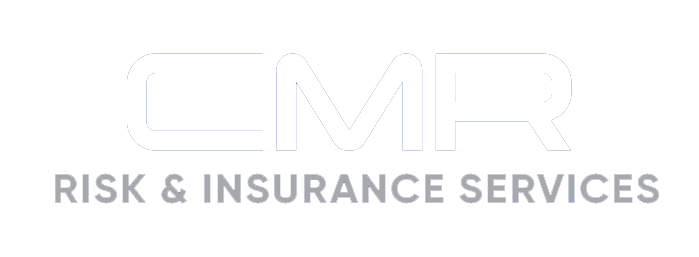Sexual Abuse and Molestation (SAM) Insurance

Organizations working closely with vulnerable individuals, including children and seniors, face heightened exposure to allegations of sexual abuse or misconduct. Public and regulatory scrutiny has intensified in recent years, with greater emphasis on how organizations prevent, respond to, and are held accountable for such claims. Moreover, statutes of limitations in several states have been expanded to allow victims to file claims for incidents that occurred many years ago. Even a single sexual abuse, molestation, or misconduct allegation can result in costly litigation, reputational damage and long-term operational disruption, even if later found to be groundless.
Sexual abuse and molestation (SAM) insurance, also referred to as sexual misconduct liability insurance, is a specialized coverage that is increasingly vital for organizations serving vulnerable populations. It can help organizations financially manage liability, maintain trust and uphold their duty of care in today’s complex risk environment.
What Is Sexual Abuse and Molestation Insurance?
SAM insurance provides financial protection for organizations against claims alleging sexual abuse, molestation, or misconduct by employees, volunteers or representatives. Policies may cover the costs of defending against allegations, as well as any resulting settlements or court judgments. Some policies may also include coverage for the victim’s medical expenses.
SAM policies are typically available as standalone coverage or as endorsements added to commercial general liability policies. They are usually structured on a claims-made basis, meaning that coverage is triggered when a claim is first made and reported during the policy period, rather than when the incident occurred. While some bundled commercial insurance packages include SAM coverage, they may have limitations, such as low sublimits, high deductibles, or exclusions. Standalone policies, by contrast, typically offer higher limits, dedicated protection, and greater flexibility to meet regulatory or contractual requirements.
Who Needs SAM Insurance?
SAM insurance is essential for organizations interacting with minors, seniors, or other vulnerable populations, such as schools, churches, healthcare clinics, nonprofits and daycares. Even organizations with minimal direct contact with vulnerable individuals should assess their risk profile, as they may still be held liable for failing to prevent, supervise, or respond appropriately to incidents of sexual misconduct, molestation, or abuse.
Moreover, regulatory bodies, contractual partners, and institutional stakeholders may require organizations to carry SAM insurance as part of their compliance or risk management obligations. Coverage also demonstrates a commitment to protecting the well-being of clients, which can enhance an organization’s reputation.
Core Coverage Features and Policy Structure
While coverage terms vary by provider, SAM policies typically have the following key features:
- Defense cost coverage—SAM policies usually include coverage for legal fees, court expenses and other defense costs, regardless of whether wrongdoing is proven. This coverage helps organizations respond effectively to claims without bearing the full financial burden.
- Per-victim limits and aggregate caps—SAM policies typically include two coverage limits, with a per-victim limit applying to each individual claimant and an aggregate cap setting the maximum payout for all claims made during the policy period. This dual-limit structure helps support compensation for multiple victims without exhausting the policy on a single high-value claim.
- Coverage for organizational negligence—SAM policies may include coverage for allegations of negligent hiring, supervision, training, or failure to report suspected abuse or misconduct. This coverage can help protect the entity itself when liability arises from systemic failures, distinct from intentional acts committed by individuals.
- Physical abuse endorsements—SAM policies may include coverage for physical abuse through an endorsement, allowing organizations to tailor protection to their specific risk profile.
- Extended reporting and prior acts coverage—Many SAM policies offer extended reporting periods and coverage for prior acts, which may be critical considering the long-tail nature of abuse claims.
Common Exclusions and Limitations
While SAM insurance offers essential protection, organizations should be aware of key exclusions and limitations. Coverage typically excludes incidents known to the insured but not disclosed prior to the policy inception, as well as intentional acts of abuse or misconduct by the individual perpetrator. Unless specifically endorsed, coverage for independent contractors, volunteers, or third-party personnel may require explicit inclusion. Additionally, while SAM policies may cover civil, judicial, or administrative claims, they generally exclude criminal defense costs once a conviction has occurred.
Claim Examples and Litigation Trends
Recent litigation trends have revealed a pattern of increasingly complex and high-stakes claims. Extended statutes of limitations in some jurisdictions have increased the volume of retroactive claims, with multi-million-dollar cases surfacing years or even decades later. Moreover, many lawsuits now emphasize institutional negligence, such as inadequate oversight or systemic breakdowns in safeguarding protocols. For example, a healthcare provider might be held responsible for failing to oversee a contracted therapist accused of misconduct, or a youth services organization could face scrutiny for ignoring prior complaints about a staff member who later harmed a client.
Insurers have responded with tighter underwriting standards, higher premiums, and in some cases, reduced capacity or requirements for shared-risk programs. These patterns underscore the need for organizations to adopt proactive risk management practices. Organizations should conduct robust employee background checks, implement frequent hands-on, scenario-based staff training and develop detailed abuse prevention plans, including clear reporting procedures for incidents. Evidence of proactive abuse prevention may be necessary to satisfy the underwriting criteria of SAM insurers.
Conclusion
Rising allegations, evolving legislation and stricter underwriting standards have made it increasingly difficult for organizations to navigate the complex landscape of sexual misconduct liability. Fortunately, SAM insurance, coupled with robust risk management practices, can help organizations reduce exposure, reinforce accountability, and maintain trust in the face of evolving legal and reputational risks. Contact CMR Risk & Insurance Services, Inc. today to review your coverage.
Article Published By: Zywave, Inc.
